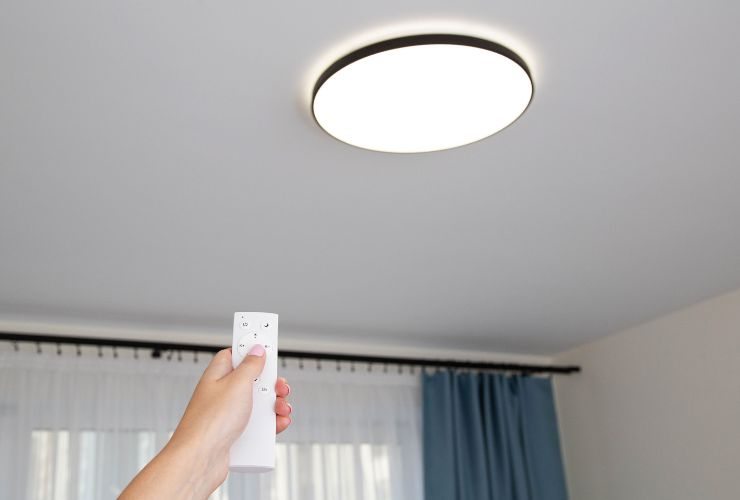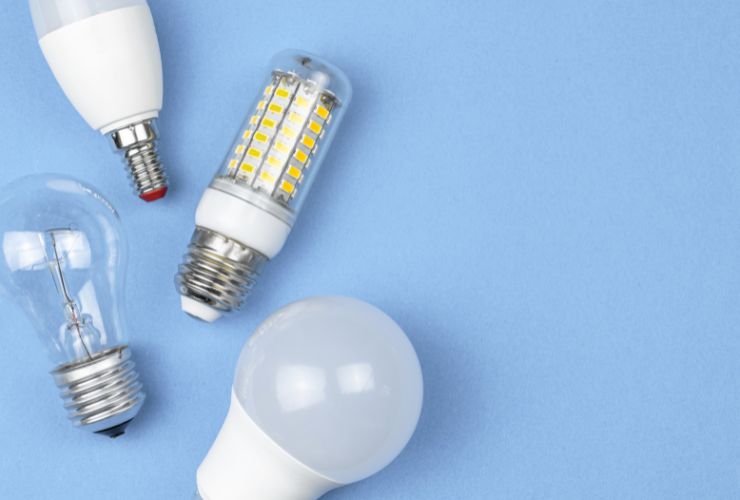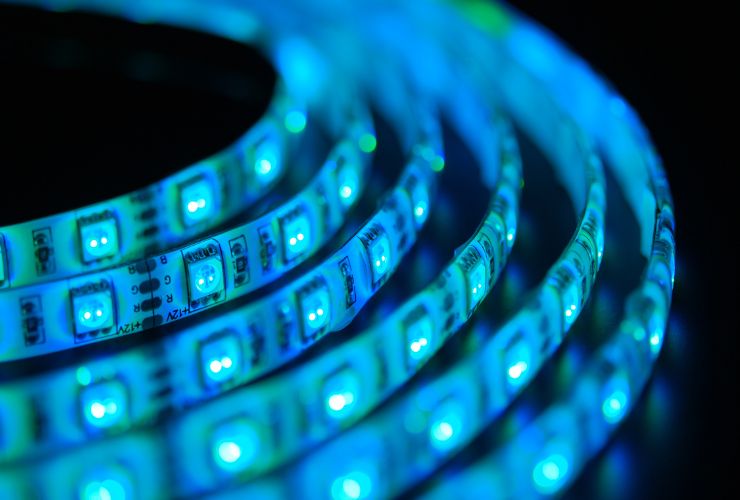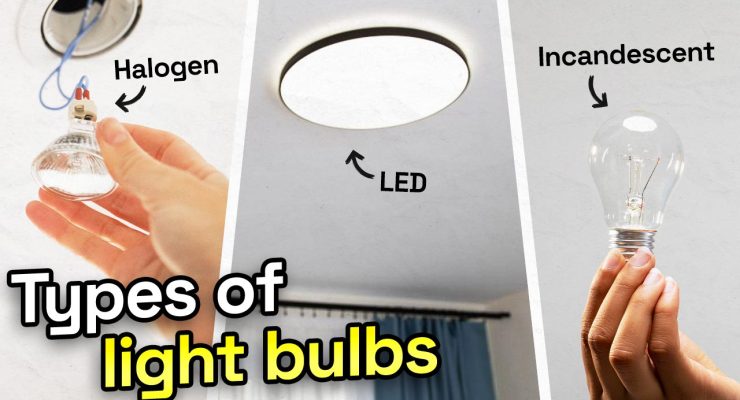Fast read
In Australia, several different types of lights and lamps have different advantages and unique qualities.
The most prevalent type of lamp used is the incandescent lamp, sometimes called conventional or Edison lamp. Although inexpensive and straightforward to install, they were not energy-efficient, have a short lifespan, and are now nearly obsolete.
LED bulbs are becoming increasingly popular because of their high energy efficiency and long lifespan. Compared to incandescent bulbs, they are more versatile, generate a range of light from warm to white, consume less electricity, and last longer.
Halogen lights, also incandescent bulbs, can produce much heat and are less energy-efficient. CFLs were extremely popular in the last decade but are increasingly being replaced by LED, which is becoming the preferred technology.
Different types of lights are on offer in Australia & New Zealand
In Australia, there are several different types of lights and lamps which have distinct advantages and unique qualities.
Incandescent lamps
Incandescent lamps, also known as traditional or Edison lamps, were, till a few years, the most common type of light available. They have been around for over 100 years and use a simple design consisting of a heated filament to produce light.
The affordability of incandescent light bulbs was one of their key benefits. They could be bought at any hardware or lighting store and were widely accessible.
However, incandescent lighting is not particularly energy-efficient. Most only last 1,000 hours and use a lot of electricity to make light. Compared to other modern lighting technologies, they are much more expensive to run if used daily.
Additionally, the warm, yellowish light that incandescent light bulbs emit might not be appropriate for every area. They were frequently employed in living rooms and bedrooms where a warm, welcoming ambience was desired.
LED lamps
LED light bulbs are popular because they use less energy and last longer than other types of light bulbs. They employ a semiconductor to produce light, unlike incandescent lamps, which use a heated filament. As a result, compared to conventional incandescent lamps, they can use up to 900% less electricity.
For example, the standard incandescent light bulb would use 75W and 100W per hour of running, while a standard LED bulb ranges in consumption from 7W to 12W. LED also lasts 10 times + longer, with 10,000 hours plus lifespan being the norm.
The energy efficiency of LED lighting is one of its main advantages. They can last up to 25 times longer than incandescent light bulbs and consume up to 90% less energy. They can, therefore, help you save a sizable sum of money over time on your energy costs.
LED lights are also incredibly adaptable. They are appropriate for various applications since they come in multiple forms, sizes, and colours. They can be utilised for decorative purposes and general and job illumination.
Additionally, LED lamps emit a brilliant, white light like the sun’s. They are, therefore, perfect for usage in places like kitchens and offices where visibility is important.

Halogen lamps:
Halogen lamps are incandescent lamps that use a small tungsten filament surrounded by a gas, such as iodine or bromine. This gas helps to increase the filament’s colour temperature, resulting in a brighter, whiter light.
Brightness is one of the critical advantages of halogen lamps. LED lights are great for places like offices and kitchens where visibility is important. They give off a bright, white light similar to natural daylight.
Brightness is one of the key advantages of halogen lamps. LED lights are great for places like offices and kitchens where visibility is important. They give off a bright, white light similar to natural daylight.
Another advantage of halogen lamps is their long lifespan. They can last up to twice as long as traditional incandescent lamps, most lasting around 2,000 hours. This makes them a cost-effective option in the long run.
However, halogen lamps are less energy efficient than other lamps, such as LED lamps. They use more electricity to produce the same amount of light and can produce a lot of heat. This can make them less suitable for use in small spaces or areas where heat buildup is a concern.
Fluorescent lamps
Fluorescent lamps are a type of lamp that uses a gas-discharge process to produce light. They are often used in commercial and industrial settings but are also becoming more popular for residential use.
LED lights use less electricity than incandescent light bulbs to produce the same amount of light, saving money in the long term.
In addition, fluorescent lamps have a long lifespan. Most fluorescent lamps can last around 10,000 hours, much longer than traditional incandescent lamps. This makes them a good option for areas where the lights are on for long periods, such as offices and warehouses.
They can produce a harsh, flicker light that can be uncomfortable to look at for long periods. They also contain mercury, a toxic substance that can harm the environment if not disposed of properly.
In addition, fluorescent lamps can take a few minutes to warm up and reach full brightness. This can be inconvenient if you need immediate lighting in your space.

Compact fluorescent lamps (CFLs)
Compact fluorescent lamps (CFLs) are a smaller version of traditional fluorescent lamps. They use the same gas-discharge process to produce light but are designed to be more compact and versatile.
One of the main benefits of CFLs is their energy efficiency. They use less electricity to produce the same amount of light as incandescent lamps, making them a cost-effective option in the long run.
In addition, CFLs have a long lifespan. Most CFLs can last around 10,000 hours, much longer than traditional incandescent lamps. This makes them a good option for areas where the lights are on for long periods, such as offices and warehouses.
Another advantage of CFLs is their versatility. They are available in various shapes and sizes, making them suitable for multiple applications. For example, they can be used as a replacement for incandescent lamps in most fixtures and can even be used in outdoor settings.
It may take a few minutes for the lights to fully turn on and this can be inconvenient if you need immediate lighting in your space. They also contain mercury, which is a toxic substance that can be harmful to the environment.
Smart bulbs
Smart bulbs are a type of LED light bulb that can be controlled via a smartphone app or a voice assistant such as Alexa or Google Home. These devices have been launched recently. These devices were recently released.
They can be programmed to turn on or off at specific times. They can also be set to respond to triggers such as movement or a door opening. Some smart light bulbs can also change the lighting colour, creating particular lighting effects.
Smart bulbs are more expensive than traditional LED bulbs, but their versatility makes them increasingly popular on our path to a smart home.

Pretty decorative light bulbs
Decorative light bulbs are designed to be visually appealing, where the bulb becomes a light feature. Lately, there is a fashion in restaurants and some living rooms to display LED lights that look like they have large filaments, making them attractive.
They are commonly used for decorative lighting, such as pendant lights or chandeliers. Decorative light bulbs are available in various styles, including Edison-style, globe, and tube bulbs.
Decorative light bulbs are primarily LED type nowadays but are typically less energy-efficient than the standard LEDs. However, their aesthetic appeal makes them a popular choice for those looking to add a touch of style to their home lighting.
In summary
Many different types of lights are available in Australia, each with unique features and benefits. Incandescent lamps are the most common type, inexpensive and widely available, but they are not energy efficient.
LED lights are getting more popular for being energy efficient and lasting long, but they may cost more at first. LED light costs have gone down in the last five years and will continue to decrease as production increases.
Fluorescent lamps are energy efficient and have a long lifespan but can produce a harsh, flicker light.
Compact fluorescent lamps (CFLs) are a smaller version of fluorescent lamps. They are often used as a replacement for incandescent lamps but can take a few minutes to reach full brightness.
So overall, LED is winning hands down, and the same principle applies to all technologies. One can pay a little less in purchasing halogen or CFL but then pay more in the long run via higher running costs. Someone buys a more expensive LED light bulb but saves money on electricity and doesn’t have to change bulbs as often.



